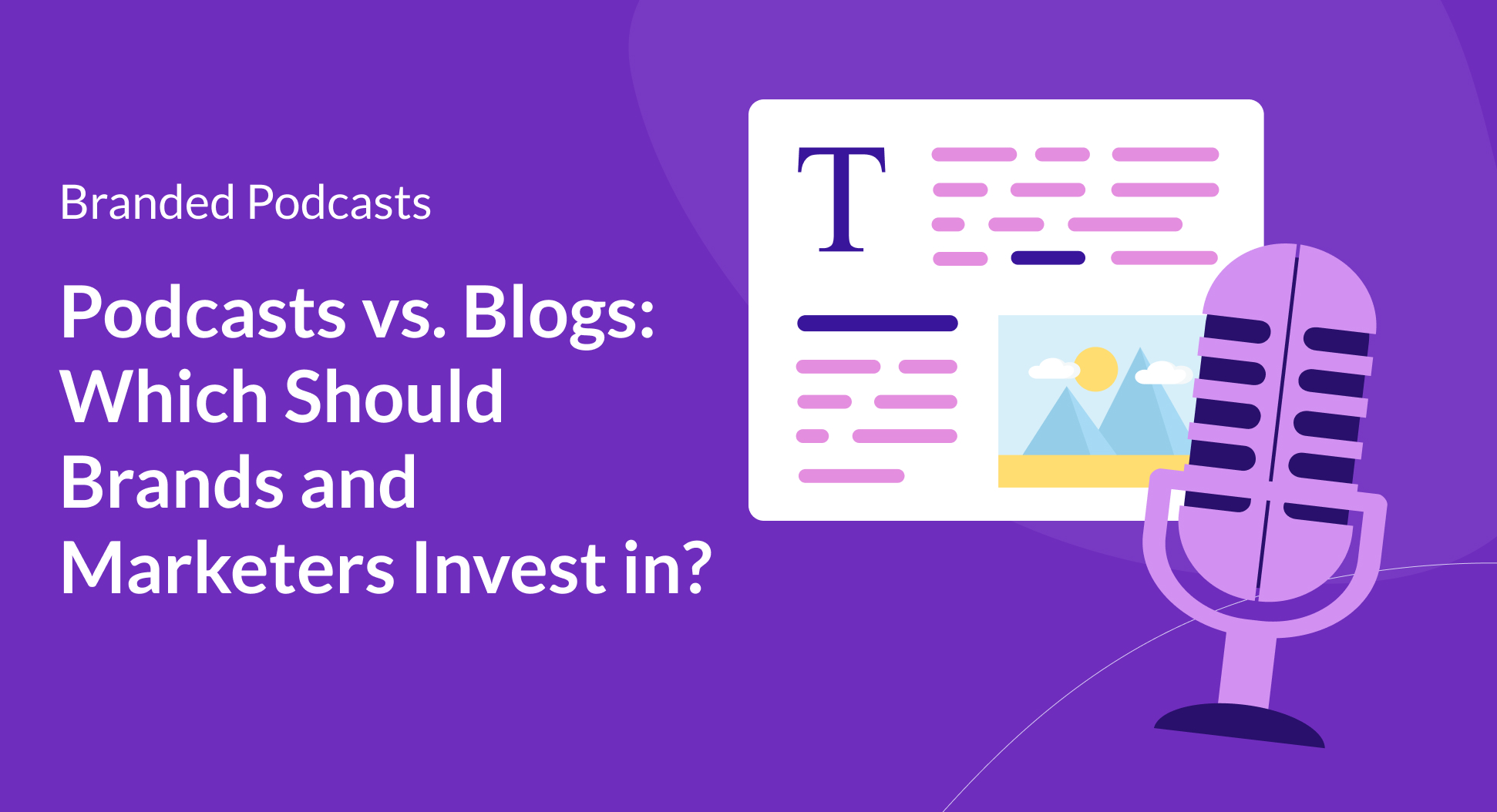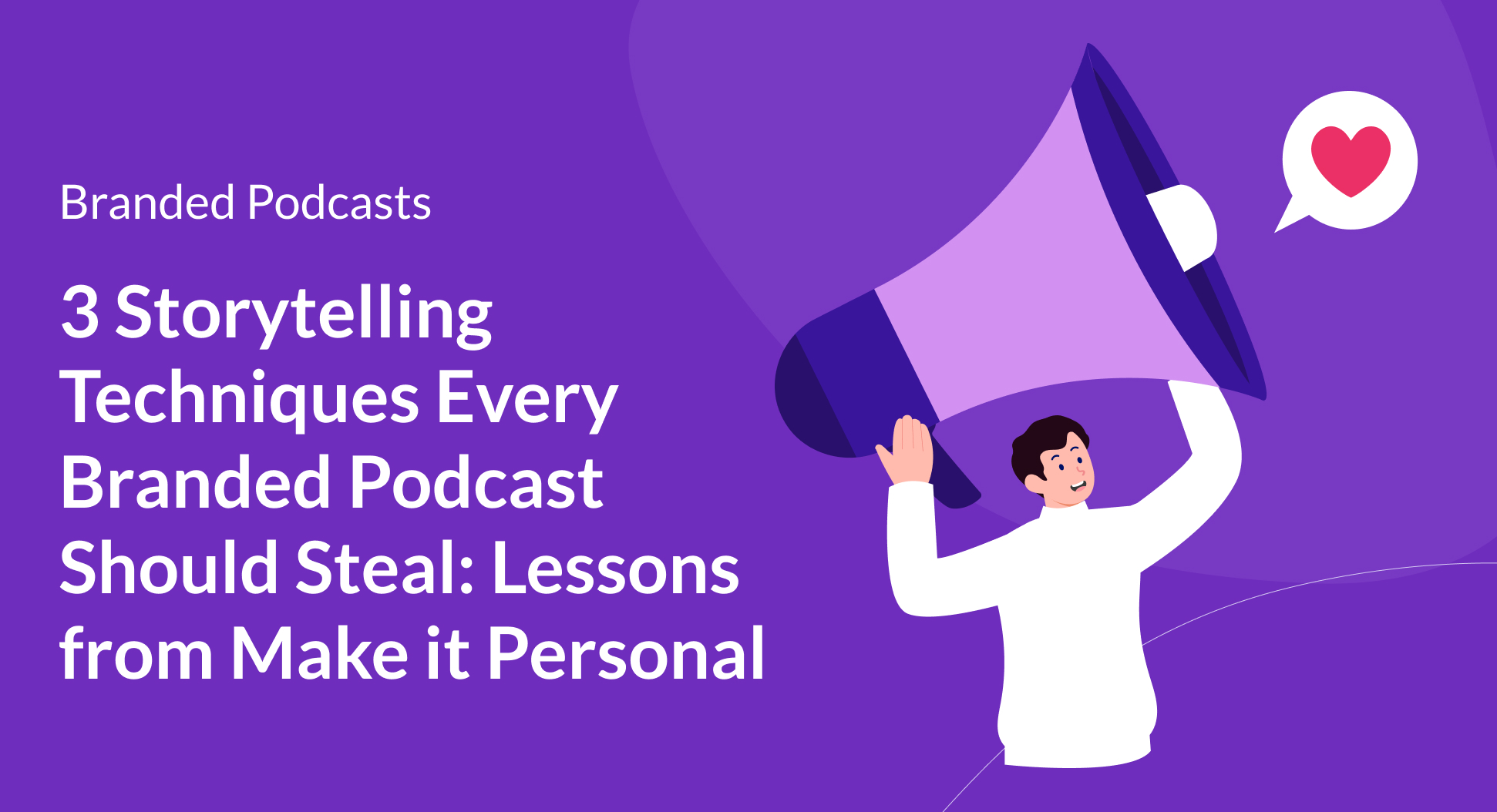Contents
What is a competitive matrix?
If you’re a marketer, you’re likely familiar with what a competitive matrix is. But to make sure we’re all on the same page, let’s answer the question: What is a competitive matrix?
A competitive matrix is a marketing tool that visually represents a brand's positioning against its competitors. It helps marketers understand their brand's unique selling points, opportunities for differentiation, and areas for improvement by comparing key attributes or features such as pricing, product offerings, market share, customer service, and marketing strategies, among others.
The matrix is instrumental in formulating marketing plans, making informed decisions, and identifying potential opportunities in the marketplace.
Applying a competitive matrix to your branded podcast
This marketing asset can be applied to your brand’s podcast. Building a competitive matrix for your branded podcast helps you gain a better understanding of the competitive landscape and identify opportunities to differentiate your show.
We worked up a step-by-step guide to help you create a competitive matrix for your branded podcast so you can continue to improve and scale.
Let’s dive right in!
1. Identify your competition
Begin by researching and listing the podcasts that are similar to yours or target a similar audience, whether produced by brands, networks, or individual creators.
As a branded podcast it’s easy to know the companies in your space that already have a podcast out. For example, Sephora’s natural competitor would be Ulta Beauty. Whole Foods’ competitors would be Erewhon Market or even Trader Joe’s infamous show, Inside Trader Joe’s. CIBC’s competition would be Scotiabank or The Toronto-Dominion Bank (TD), and the list goes on.
2. Determine key comparison criteria
Make sure to identify the key criteria or factors that are important in evaluating the competitiveness of your branded podcast to another show.
These criteria can include factors such as:
- Content quality
- Production value
- Audience size
- Audience persona (age, income, location)
- Frequency of episodes (weekly, bi-weekly, monthly, quarterly)
- Host expertise and experience
- Engagement with listeners (on social channels, on air, on blogs)
- Marketing efforts (digital, newsletters, social, giveaways, contests)
- Overall popularity, reputation, and clout (ratings, buzz)
3. Create a rating scale
Assign a rating scale to assess each competitor on the identified criteria.
For example, you can use a scale of 1-5 or 1-10, with higher ratings indicating stronger performance in a particular area. Or you can even go for a word scaling (very strong, strong, medium, weak, very weak). Just make sure the rating scale is consistent across all the criteria.
4. Evaluate the competition
Assess each competitor based on the criteria you've established. Gather information about their podcast by:
- Researching their online presence on social platforms and their website (a key tip is to see if anyone influential is following them)
- Listening to episodes (both old and new so you can see the changes and growth)
- Reading articles or blogs written about their podcast
- Reviewing audience feedback and reviews
Assign ratings for each criterion for every competitor (to make it easier, you might want to choose your top 10 competitors to dive into).
5. Plot the matrix
Create a matrix or table with the competitors listed on the left side and the criteria/trait listed at the top. Fill in the matrix by assigning the ratings you've determined for each competitor and criterion.

Note: this image has checkmarks, but based on your criteria – whether it is number or words – you will populate it accordingly.
Explore CoHost’s podcast competitor research template for a downloadable guide to analyzing your competition.
6. Analyze the matrix
Review the completed matrix to identify patterns and insights.
Here are a list of questions for you and your team to reflect on:
- Where does your podcast excel?
- What do you not like about your competitor’s show?
- What do you like about them?
- Where do your competitors outperform you?
- Where are the gaps or opportunities that you can leverage to differentiate your show?
- What are the similarities between most of the podcasts in your space?
- Who are your competitors targeting?
- What are their growth strategies?
- What changes have your biggest competitors made over the years?
7. Take action on your insights
By doing a deep dive, analyzing the competitive matrix, and answering the questions in the previous section, you’re not only going to learn critical insights about your competitors, but you’ll discover ways to give your branded podcast an edge by improving content and differentiating yourself.
You can do this by developing an action plan to strengthen your podcast's competitiveness. Focus on areas where you can improve or differentiate your content, marketing strategies, audience engagement, and overall podcast experience.
8. Regularly check in and update the matrix
The competitive landscape can change over time, so it's essential to keep updating your competitive matrix. Stay informed about new competitors, changes in the industry, and emerging trends.
We suggest occasionally reviewing and updating the matrix to ensure it remains an accurate reflection of the competitive landscape. Given the world of podcasting and how tools and content available keep changing, keeping your finger on the pulse is key to staying ahead.
Building your branded podcast’s competitive matrix
By following these simple steps, you can build a comprehensive competitive matrix for your branded podcast that will help you understand your position in the market and make informed decisions to enhance your podcast's competitiveness today and in the future.
If you want to learn more and find ways to keep your edge, please get in touch with the team at Quill that would be happy to help!

.avif)




.png)

.png)




.png)
.png)
.png)
.png)